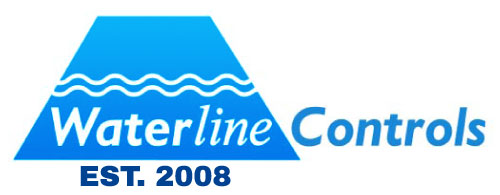Understanding Different Fire Protection Systems
Fire protection systems are designed to prevent, detect, control, and extinguish fires, helping to protect people, property, and assets. There are several types of fire protection systems, each with its specific purpose and application. Here’s a comprehensive breakdown of the various fire protection systems:
1. Fire Detection Systems
These systems are responsible for detecting the presence of a fire early, often before it becomes life-threatening. The main types are:
A. Smoke Detectors
- Function: Detect smoke particles in the air.
- Types:
- Ionization Smoke Detectors: Best for detecting fast-burning fires.
- Photoelectric Smoke Detectors: More sensitive to smoldering fires.
- Application: Common in residential and commercial buildings.
B. Heat Detectors
- Function: Trigger an alarm when a specific temperature is exceeded or when the rate of temperature increase is rapid.
- Types:
- Fixed Temperature Heat Detectors: Alarm when temperature reaches a set threshold.
- Rate-of-Rise Heat Detectors: Alarm if temperature rises rapidly.
- Application: Used in areas where smoke detectors are not suitable (e.g., kitchens, dusty areas).
C. Flame Detectors
- Function: Detect the presence of a flame using sensors like infrared or ultraviolet.
- Application: Industrial settings, especially where large machinery or flammable materials are present.
2. Fire Suppression Systems
Fire suppression systems are designed to control or extinguish fires once they have been detected. They can be categorized into the following types:
A. Water-Based Systems
- Sprinkler Systems
- Function: Automatically activate when a fire is detected, spraying water over the affected area.
- Types:
- Wet Pipe Systems: Always filled with water, activate immediately when heat is detected.
- Dry Pipe Systems: Filled with air or nitrogen; water is released only when the pipe is activated.
- Pre-action Systems: A combination of dry and wet systems, requiring a second signal (such as smoke detection) to release water.
- Application: Common in commercial buildings, offices, and warehouses.
- Deluge Systems
- Function: Similar to sprinkler systems, but all sprinklers are open, and water is released simultaneously when activated.
- Application: Used in high-risk areas with hazardous materials (e.g., chemical plants, power stations).
B. Non-Water-Based Systems
- Foam Systems
- Function: Release foam to suppress fire by smothering the flames and preventing re-ignition.
- Types:
- Aqueous Film-Forming Foam (AFFF): Used for liquid fires.
- Alcohol-Resistant Foam: Used for alcohol-based fires.
- Application: Aircraft hangars, refineries, and fuel storage.
- Gaseous Fire Suppression Systems
- Function: Release gas (often clean agent) to suppress fire without damaging sensitive equipment.
- Types:
- CO2 Systems: Use carbon dioxide to displace oxygen and smother fires.
- Inert Gas Systems: Use gases like nitrogen or argon to reduce oxygen levels.
- Clean Agent Systems (e.g., FM-200, NOVEC 1230): Use chemicals to suppress fire without harming the environment or sensitive electronics.
- Application: Data centers, server rooms, electrical rooms.
- Dry Chemical Systems
- Function: Release a dry chemical powder (e.g., monoammonium phosphate) to suppress fires by interrupting the chemical reaction.
- Application: Industrial kitchens, warehouses, and vehicles.
3. Fire Extinguishers
Portable fire extinguishers are essential for containing small fires before they spread. They are classified based on the types of fires they can extinguish:
- Class A: For ordinary combustibles (wood, paper, cloth).
- Class B: For flammable liquids (gasoline, oils).
- Class C: For electrical fires.
- Class D: For combustible metals (magnesium, titanium).
- Class K: For cooking oils and fats (often used in commercial kitchens).
Types of Fire Extinguishers:
- Water: Best for Class A fires.
- Foam: Effective on Class A and B fires.
- Dry Chemical: Suitable for Class A, B, and C fires.
- CO2: Ideal for electrical fires (Class C) and some Class B fires.
- Wet Chemical: Used in kitchens for Class K fires.
4. Fire Containment Systems
These systems prevent the spread of fire and smoke within a building.
A. Fire Doors
- Function: Prevent the spread of fire and smoke between different areas of the building.
- Types:
- Fire-rated Doors: Constructed with fire-resistant materials, rated by the time they can withstand heat (e.g., 30, 60, or 90 minutes).
- Application: Common in commercial buildings, hotels, and hospitals.
B. Fire Barriers
- Function: Use walls, partitions, or other barriers to contain fire and smoke.
- Application: Dividing large buildings into fire-safe zones.
5. Emergency Lighting and Signage
Emergency lighting and exit signage help guide people to safety during a fire.
- Function: Illuminate exits and escape routes during power outages.
- Application: All commercial buildings, particularly those with complex layouts.
6. Fire Alarm Systems
A fire alarm system detects fire or smoke and alerts building occupants. It typically includes:
- Control Panel: Central hub for fire alarm signals and response.
- Manual Pull Stations: For manually triggering the alarm in case of a fire.
- Audible and Visual Alarms: Provide notifications to building occupants.
- Monitoring Service: Some systems are connected to monitoring services that alert the fire department.
7. Fire Protection for Specific Hazards
In certain environments, specialized fire protection systems are necessary:
- Kitchen Suppression Systems: For commercial kitchens, designed to handle grease fires (e.g., wet chemical suppression).
- Electrical Fire Protection: Systems designed for high-voltage or sensitive electrical areas, often utilizing CO2 or clean agents.
- Chemical Fire Protection: Foam or dry chemical systems are used in areas with flammable liquids or hazardous chemicals.
Choosing the Right Fire Protection System
- Risk Assessment: Consider the type of business, occupancy, and fire hazards when choosing a system.
- Local Regulations: Ensure compliance with local fire codes and regulations.
- Maintenance: Regularly test and maintain all fire protection systems to ensure they are functional.
Conclusion
A comprehensive fire protection strategy involves a combination of detection, suppression, containment, and emergency response systems tailored to your specific needs. By understanding the different types of fire protection systems and their applications, you can select the best options to protect your people, property, and assets from the threat of fires.
Waterline Controls™
Our level sensors and controls aren’t just for use in residential potable water holding tanks; some of the other applications include cooling towers, sump pumps, wastewater, boilers, water storage tanks, and building fire protection water tanks.


